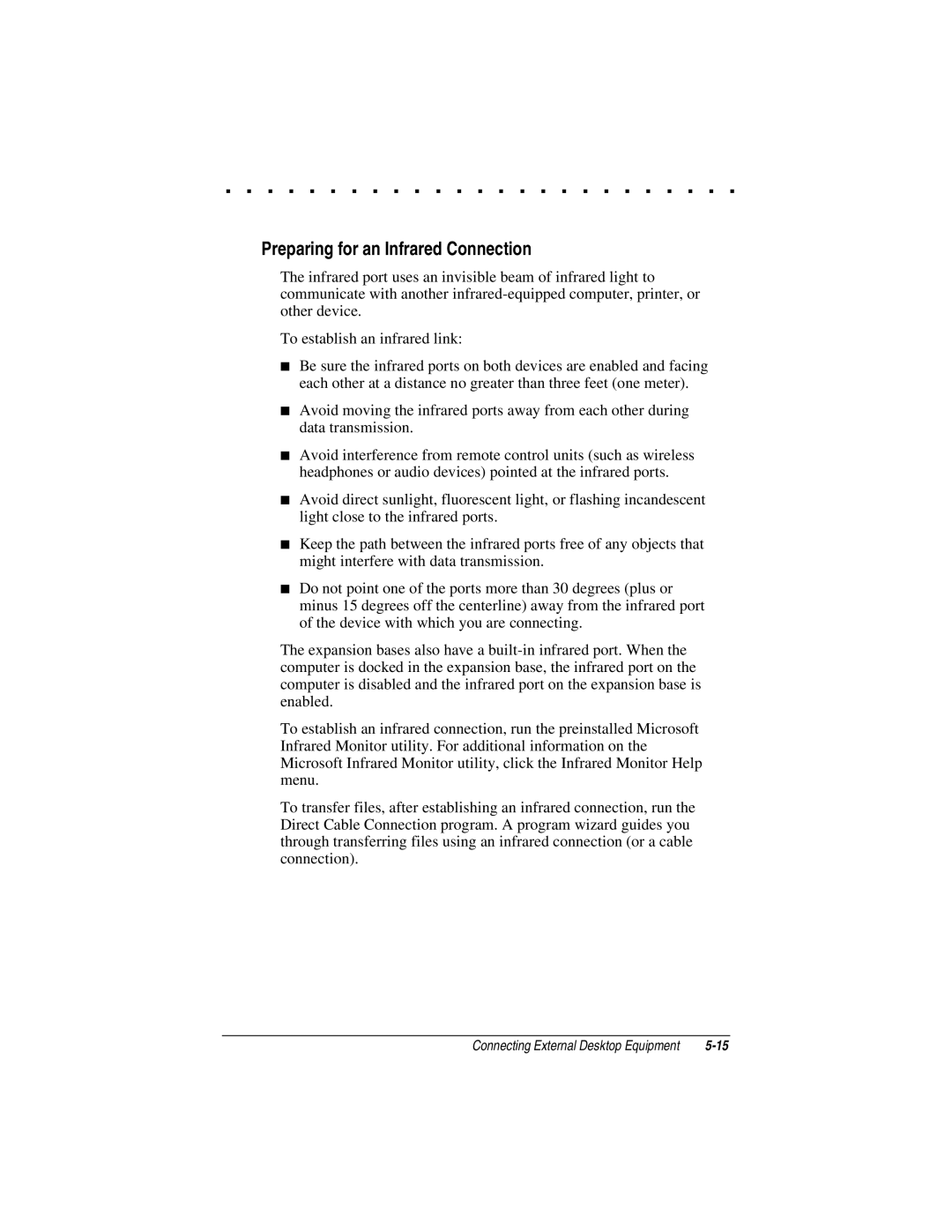. . . . . . . . . . . . . . . . . . . . . . . . .
Preparing for an Infrared Connection
The infrared port uses an invisible beam of infrared light to communicate with another
To establish an infrared link:
■Be sure the infrared ports on both devices are enabled and facing each other at a distance no greater than three feet (one meter).
■Avoid moving the infrared ports away from each other during data transmission.
■Avoid interference from remote control units (such as wireless headphones or audio devices) pointed at the infrared ports.
■Avoid direct sunlight, fluorescent light, or flashing incandescent light close to the infrared ports.
■Keep the path between the infrared ports free of any objects that might interfere with data transmission.
■Do not point one of the ports more than 30 degrees (plus or minus 15 degrees off the centerline) away from the infrared port of the device with which you are connecting.
The expansion bases also have a
To establish an infrared connection, run the preinstalled Microsoft Infrared Monitor utility. For additional information on the Microsoft Infrared Monitor utility, click the Infrared Monitor Help menu.
To transfer files, after establishing an infrared connection, run the Direct Cable Connection program. A program wizard guides you through transferring files using an infrared connection (or a cable connection).
Connecting External Desktop Equipment |
